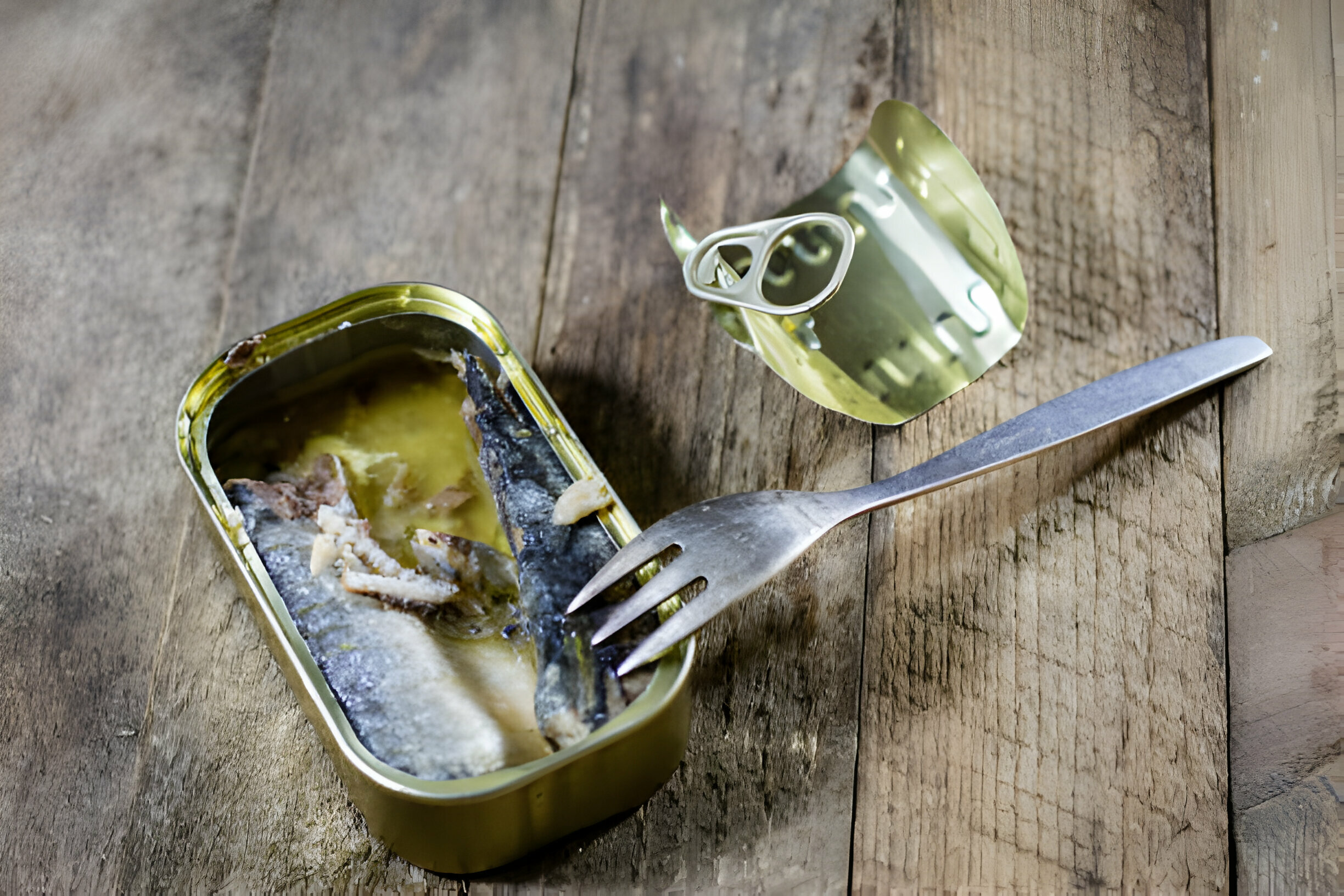If you’ve ever felt like fishing for bones in a tin of fish was as tricky as finding a needle in a haystack, fret not! This guide will show you the ropes on effortlessly removing those pesky bones. From tools like tweezers to techniques such as the press and roll method, you’ll soon be enjoying bone-free bites with ease. Dive in and learn how to tackle this fishy situation like a pro!
Inspect the Fish
Inspect the tin of fish closely to ensure there are no bones present before proceeding with removing them. Fish quality assessment is crucial for a safe and enjoyable meal. Once you’ve confirmed the fish’s quality, it’s time to employ proper handling techniques. Drain the liquid from the tin and carefully transfer the fish to a clean surface. Cooking preparation methods vary depending on your recipe choice; whether you’re making a salad, sandwich, or pasta dish, deboning is essential. Embrace culinary creativity by incorporating flavors that complement the fish while ensuring bone removal is thorough. Remember, sustainable fishing practices support our oceans’ health and future generations’ food sources – choose brands that prioritize sustainability when purchasing tinned fish.
Use Tweezers
Grab some tweezers to easily take out any small bones from your canned fish. When using tweezers, make sure they are clean and sanitized before diving in. Common mistakes include rushing through the process and accidentally breaking the bones into smaller, harder-to-remove pieces. To avoid this, go slow and steady, gently pulling out each bone one by one. Expert advice suggests using a good light source to spot those tiny bones more effectively. If you prefer alternative methods, some people recommend using a toothpick or fork tine for bone removal. Tweezer tips include grabbing the bone as close to the base as possible for a firmer grip. Remember these best practices for smooth bone extraction every time!
Cut Along the Backbone
When cutting along the backbone, be sure to use a sharp knife for clean and precise cuts. Understanding the bone structure and spine identification is crucial before starting the deboning process. Here are some tips to help you master the knife technique when dealing with fish anatomy:
- Locate the spine: Feel for the ridge running along the fish’s back to identify where the spine is located.
- Angle your knife: Position your knife blade parallel to the backbone to ensure smooth removal of bones.
- Use steady pressure: Apply consistent pressure while slicing along the backbone to separate the flesh from the bones effectively. Remember, practice makes perfect when it comes to mastering this deboning process!
Press and Roll Method
For the press and roll method, it’s important to gently apply pressure and roll your fingers along the flesh to release any remaining bones easily. This rolling technique helps in handling bones delicately without damaging the fish. When dealing with tinned fish, this pressing method is particularly useful as the bones can be more fragile. By using this approach, you can effectively remove spines while keeping the fillet intact. Remember that with tinned fish, precision is key to avoid any mishaps when removing bones. So take your time, feel for any small bones, and use the press and roll method carefully to ensure a bone-free meal.
Use a Fork
To easily separate the flesh, gently press down with a fork and then flake it apart. When removing bones from tinned fish, follow these expert tips for a quick process:
- Hold the fork at a slight angle against the fish to find bones easier.
- Use a delicate touch to avoid crushing the flesh while ensuring thorough bone removal.
- Work in small sections to maintain control over the process.
Flake the Fish
Flaking the fish with a fork can be made easier by gently pressing down and then flaking it apart. This technique helps in creating smaller, manageable pieces that are bone-free and ready to be incorporated into various dishes. By flaking the fish, you not only remove any unwanted bones but also get to control the texture of your meal. This method allows for a versatile approach to cooking with tinned fish, offering opportunities for flavor enhancement through different cooking techniques like grilling or pan-searing. You can use the flaked fish in recipes such as fish tacos, pasta dishes, or even salads to add nutritional benefits like omega-3 fatty acids while enjoying a delightful texture variation.
| Flavor Enhancement | Cooking Techniques | Recipe Ideas |
|---|---|---|
| Lemon zest | Grilling | Fish tacos |
| Dill | Pan-searing | Pasta dishes |
| Garlic powder | Baking | Salads |
This table provides ideas on how to enhance flavor and experiment with cooking techniques when using flaked tinned fish in various recipes.
Rinse Under Water
When rinsing the fish under water, make sure to handle it delicately to avoid breaking it apart. Remember these tips:
- Proper techniques: Gently run cool water over the tinned fish in a colander or strainer.
- Common mistakes: Avoid using hot water as it can cause the fish to become mushy and fall apart.
- Expert tips: Use a fork or your fingers to carefully remove any visible bones while rinsing.
Following these best practices ensures you remove bones from tinned fish effectively without damaging its texture. If you encounter any issues, troubleshooting tip: Try using a gentle stream of water and patience to meticulously clean the fish.
Strain Through a Sieve
Ensure that you strain the contents through a sieve to achieve a smoother texture in your dish. When dealing with tinned fish, proper fish inspection and quality control are crucial steps before starting the bone removal process. Utilizing the sieve technique allows for efficient removal of bones while maintaining the integrity of the fish. Employ tweezer precision for delicate handling during this intricate task. Backbone cutting requires expert skill to ensure all bones are successfully extracted. Finally, press and roll over the sieve for quick extraction of any remaining small bones or fragments. By following these steps diligently, you can enjoy bone-free tinned fish in your recipes without compromising on quality or taste.
Soak in Milk
Soaking the fish in milk helps to tenderize and enhance its flavor before cooking. It’s a simple yet effective way to prepare your fish for a delicious meal. Here are some tips to help you with bone extraction and deboning techniques:
- Milk Bath: Submerge the fish in milk for at least 30 minutes to help soften the bones and make them easier to remove.
- Bone Extraction: Gently feel for bones with your fingers or use tweezers to pull them out carefully.
- Fish Preparation: After soaking, pat the fish dry and proceed with your preferred recipe, whether it’s frying, grilling, or baking. Enjoy your bone-free fish dish!
Utilize a Bone Removal Tool
Using a bone removal tool can make the process of extracting bones from your meal much easier and quicker. This handy instrument offers practical applications in removing small bones from tinned fish effortlessly. Compared to alternative methods like using tweezers, bone removal techniques with this tool are more efficient. The benefits of this tool include its precision and ease of use, allowing you to enjoy your meal without worrying about accidentally swallowing a bone. With its specialized design, the bone removal tool can swiftly eliminate bones without damaging the surrounding flesh, making it a must-have for seafood lovers. So next time you’re dealing with pesky fish bones, consider investing in a bone removal tool for a smoother dining experience.


